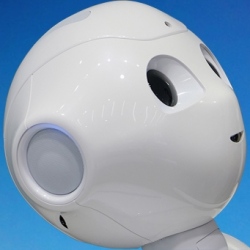
Joining UX, UI, and graphic and interaction design is an idea known as “consciousness design” that will emerge as A.I. assistants grow in popularity. Amazon Echo and other A.I. assistants are among the pioneers of virtually “interface-less” experiences that make consciousness design central to product success.
The idea is not so much to offer a simple search that delivers less-than-desired results, which is what Facebook bots basically do, but rather to offer a real customized experience that harnesses artificial intelligence to power the coming revolution.
How do we build a cohesive personality that customers will love? Do we want to be the customer’s best friend, concierge, or guru? Do we want to be perceived as a robot or as human?
In practicing consciousness design, we found there were four key components to building a cohesive persona:
1. Values and personality
In building uor chatbot, Mezi, we focused on a few traits that really defined the persona, such as being knowledgeable, trustworthy, energetic, and friendly. We crafted Mezi’s “voice” to match these traits, from the use of exclamation marks and emojis to saying “hey” instead of “hi” as a greeting. We initially chose to use emojis because it was fun and quirky, but that aspect of our voice ended up really standing out and being memorable to our customers because it contrasted with the way they thought an A.I. bot would communicate.
2. Consistent voice
How text is edited and presented to users is important (call it copy editing the bot), especially when the A.I. assistant is at the center of the user experience. Like many assistant startups that are a combination of human and A.I. assistance, we can’t code every message we send. This creates a challenge in ensuring that the human agents maintain consistency with the A.I. voice. Mezi addressed this challenge by documenting and widely communicating the Mezi persona’s values and personality traits, which were reinforced through weekly training sessions. For example, we held trainings on everything from the best way to exhibit thoughtfulness to how we ask clarifying questions to how we describe our product recommendations.
3. Supporting UX/UI
A thoughtful tone is the most obvious way to express an assistant’s consciousness. But, as we all know, it’s not just what you say but what you do that matters. To more holistically express the assistant persona, we carefully considered details such as the blue and light gray colors used in our message bubbles, which were selected to create a friendly yet professional feel. We took a similar approach to naming the app. Mezi was originally called Mez (short for “message”), but we decided to add an ‘i’ at the end to make it sound like someone’s name. The Mezi persona is ingrained in the UX/UI experience, starting from the sign-up flow. Instead of showing a standard app tour and a series of account creation steps, Mezi introduces itself in the first person and talks the customer through the process to familiarize them with the persona.
4. Points of detachment from the persona
While it’s important to let the customer buy into the relationship that he or she is forming with the assistant, some parts of the experience are best separated from the assistant. For example, we determined that NPS (Net Promoter Score) surveys should be presented as a system dialogue from the “app” rather than as a message from “Mezi,” so the customer would feel comfortable giving candid feedback. Prompts to rate Mezi in the App Store are also better coming from the “app,” for similar reasons.
At the end of the day, A.I. assistant apps present an amazing opportunity to build customer relationships in a way that no other interface has allowed before. The flip side is that companies need to be very careful not to erode trust by making mistakes with the assistant. A sloppy message is far more dangerous than a bug on a traditional app, it could damage the entire service relationship.
The field of consciousness design is a new paradigm. As more smart people refine consciousness design over time, we’ll find ourselves “meeting” new apps, instead of just using them.
